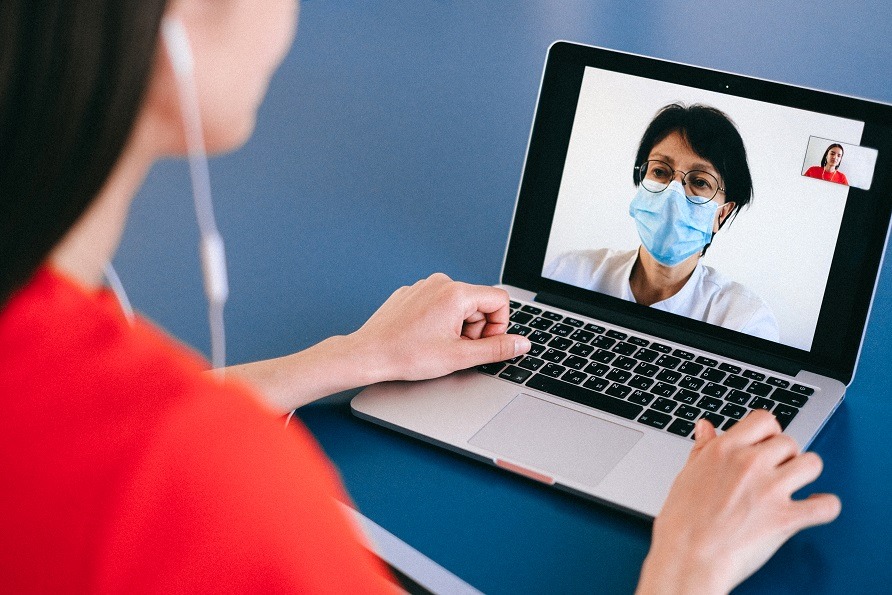The current Covid-19 Virus pandemic has altered our way of life. After an almost global shutdown in an attempt to lessen the explosive spread of the virus, governments are, months later, slowly easing lockdown measures with a gradual return to normal activities. Technology has provided alternatives by helping businesses and organizations to either adopt more technology tools or transition into full virtual operations. Healthcare, among other sectors, has benefited. After rising mortality rates and pressure on hospital facilities, access to healthcare services had taken a nosedive.
Governments were faced with the challenges of balancing the demands of responding to Covid-19 cases and maintaining essential healthcare service delivery while preventing the system from collapse. Although telemedicine has been around for over 40 years, many healthcare providers see it as an odd and unfamiliar way to interact with patients. However, in more recent times, telehealth technology tools have seen a massive increase in popularity and use.
Since telemedicine assessment tools involve huge data exchange, it’s imperative that companies introduce strategies to address the privacy risks involved. This will not only overcome the reluctance of doctors to adopt telehealth technology tools, but also drive more demand for telemedicine as a full-fledged, modern health-care provision.
Is your healthcare organization conducting telemedicine, but worried about the security risks to personal identifiable information (PII)? Here are some of the top cybersecurity and technology tools that will allow you to practice secure telemedicine.
Popular or Notorious?
Oppositions to the full adoption and integration of a virtual healthcare delivery did not start today. Studies reveal that the lack of popularity of telemedicine in medical practice is motivated by doctors’ reluctance to adopt the technology themselves. Most of these oppositions both have something and nothing to do with the security risks and data integrity involved. By understanding how telemedicine slowly became popular, it will shed light on how it’s become a sector that malicious attackers can exploit if proper measures and tools are not put in place.
The advent of radio revolutionized communication in the early 1900s. It wasn’t long before innovators began to imagine how doctors could attend to patients over the radio. Another watershed moment in the application of telemedicine was in April 1924 when an imaginative cover for Radio News magazine foreshadowed telemedicine in its portrayal of a “TV doctor” connected to a patient not just by sound but also through a motion picture. In 1959, clinicians at the University of Nebraska established a two-way television setup to transmit information to medical students across campus, and five years later linked with a state hospital to perform video consultations.
Since then, telemedicine has developed and enjoyed popular support especially in rural settings where people have little or no access to direct healthcare services. With the prevailing pandemic crisis, telemedicine has continued to grow. It was predicted that telehealth visits could top 1 billion in 2020 amid the COVID-19 crisis. The value of the virtual health sector is expected to reach $130.5 billion dollars by 2025.
In addition, telemedicine has been projected to have a big impact on more than 80 (do you mean specialty fields?) such as radiology, psychiatry, neurology, and most chronic disease management. There have also been dire concerns of exposing the data security of patients and broader health system employees to great risk. For instance, insulin pumps were reported to be vulnerable to hacking in 2010 and 2013. In August 2016, a low-cost infrared laser was used to hack an intensive care unit infusion pump sensor even without contact capability.
Assess your cybersecurity
Any Differences between Telehealth and Telemedicine?
Although telehealth is closely related to telemedicine, the former is broader in scope and range. According to the World Health Organization (WHO), telehealth includes “surveillance, health promotion and public health functions.” While telemedicine focuses mainly on the diagnosis and management of patients, telehealth also deals with the prevention, education and health promotion.
Telehealth incorporates on-line continuing education for medical professionals and information for the public. In addition to clinical services, telehealth may also refer to remote non-clinical services such as provider training, administrative meetings, amongst others.

Why You Should Secure Your Telemedicine
Apart from the incidences mentioned earlier, there are other stronger reasons why you should . As new technologies and networked medical tools continue to be created and utilized in the telemedicine infrastructure, there will be an immediate impact on the life of the patient.
Telemedicine needs specific tools, apps, and software programs to connect back to the provider practice secure telemedicine network from remote locations. The health provider can’t manage or operate such devices alone, making it difficult to guarantee security within the network and at the system layer.
The Best Tools in Telemedicine Security
If healthcare is your business, the protection of personal health information should be paramount. The privacy of patients and the security of medical data is important. The law compels compliance with HIPAA to create a secure organizational environment for protecting patient data.
Listed below are some of the best tools for protecting privacy and securing your network in your telemedicine practice.:
- Secure text message (STM): Texting is a major part of today’s digital world. With people abandoning landlines and doing virtually everything from their mobile phones, it’s a logical move for providers to take advantage of this consumer preference and offer appointment reminders, post-visit instructions and other text-based updates which are HIPAA compliant.
For instance, TeleMessage App protects patient information, ensures message security and is HIPAA compliant. It also offers the following benefits, such as end-to-end encryption, authentication of user identities such that only authorized users are able to access it, message self-destruct feature, remote lock & wipe, and many others.
- Network Access Control (NAC): NAC solutions can play a key role in the security of telemedicine initiatives. For example, modern network access controls allow security teams to see each device connected to the network. This is particularly important as telemedicine is carried out over connected mobile devices such as smartphones, tablets or portable medical devices.
The NAC solution identifies each of these devices at the time of connection, continuously tracks and monitors each device, and can provide automated responses to those exhibiting anomaly, menacing behavior.
- Application Security: Telemedicine practices rely on a number of applications to connect physicians to patients. IT teams are often unable to control the level of security built into these apps, or when remote users update their apps as soon as patches are released— which may make them vulnerable. Application security tools such as web application firewalls, can protect health networks from common application vulnerabilities, such as OWASP top 10, zero-day threats, and malicious bots.
Closing Thoughts
Telemedicine technology is continually thriving and evolving. Doctors and other health professionals engaged in telehealth through radios and telephones several decades ago. Currently, it’s changed since the arrival of the Internet Age and the widespread use of smartphones.
The myriad of cybersecurity issues associated with telemedicine services makes it important for any providers to put safety guidelines in place and tackle the security threats posed by imminent aggressions from cyber attackers.
There’s a considerable risk that lives could be affected if a cyberattack tampers with information that is normally prescribed for telemedicine services. Telemedicine is, therefore, a very important system that must be considered in terms of safety and security.
Contact us now at RSI Security if you want to find out more about how to secure your telemedicine operation.
